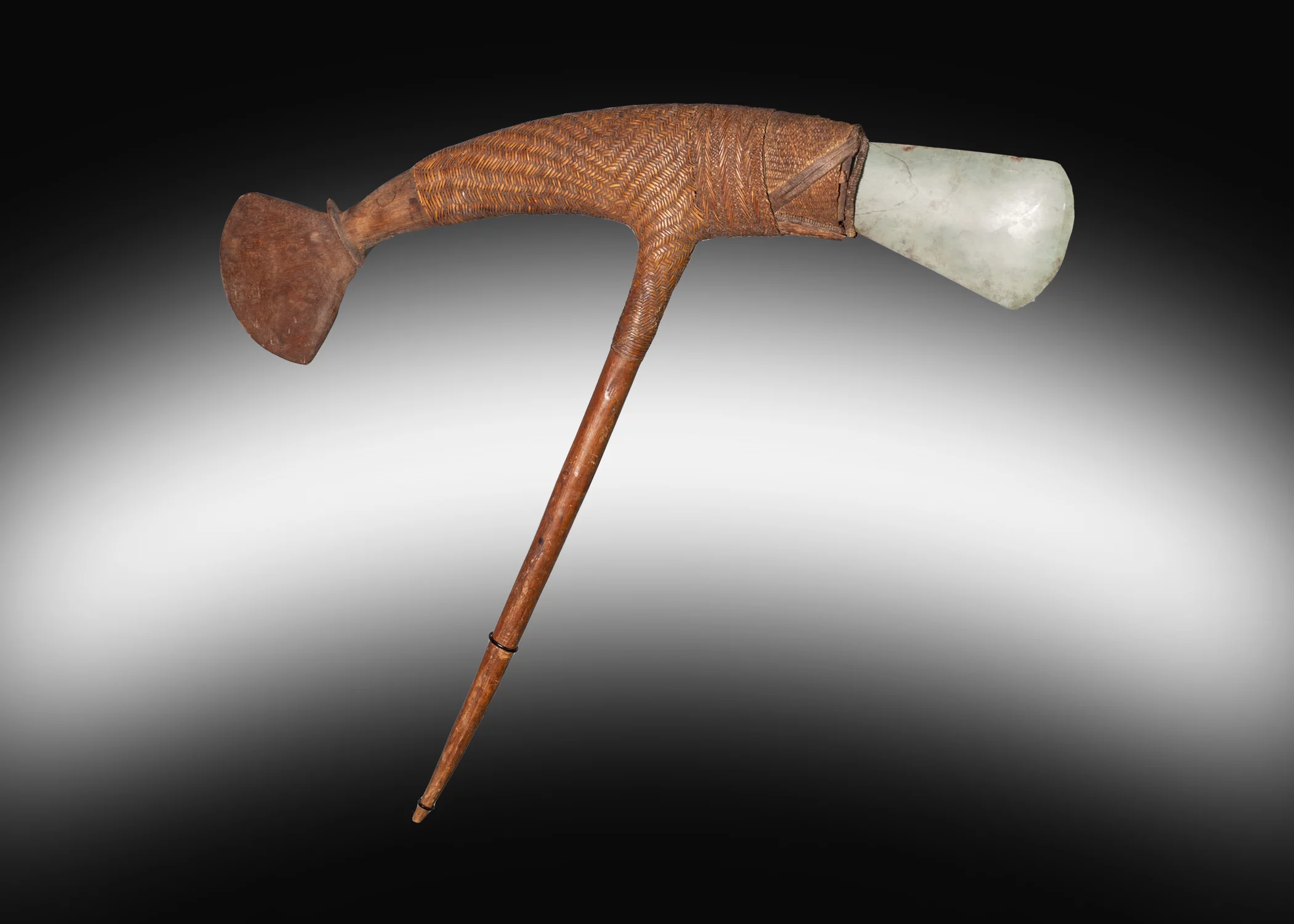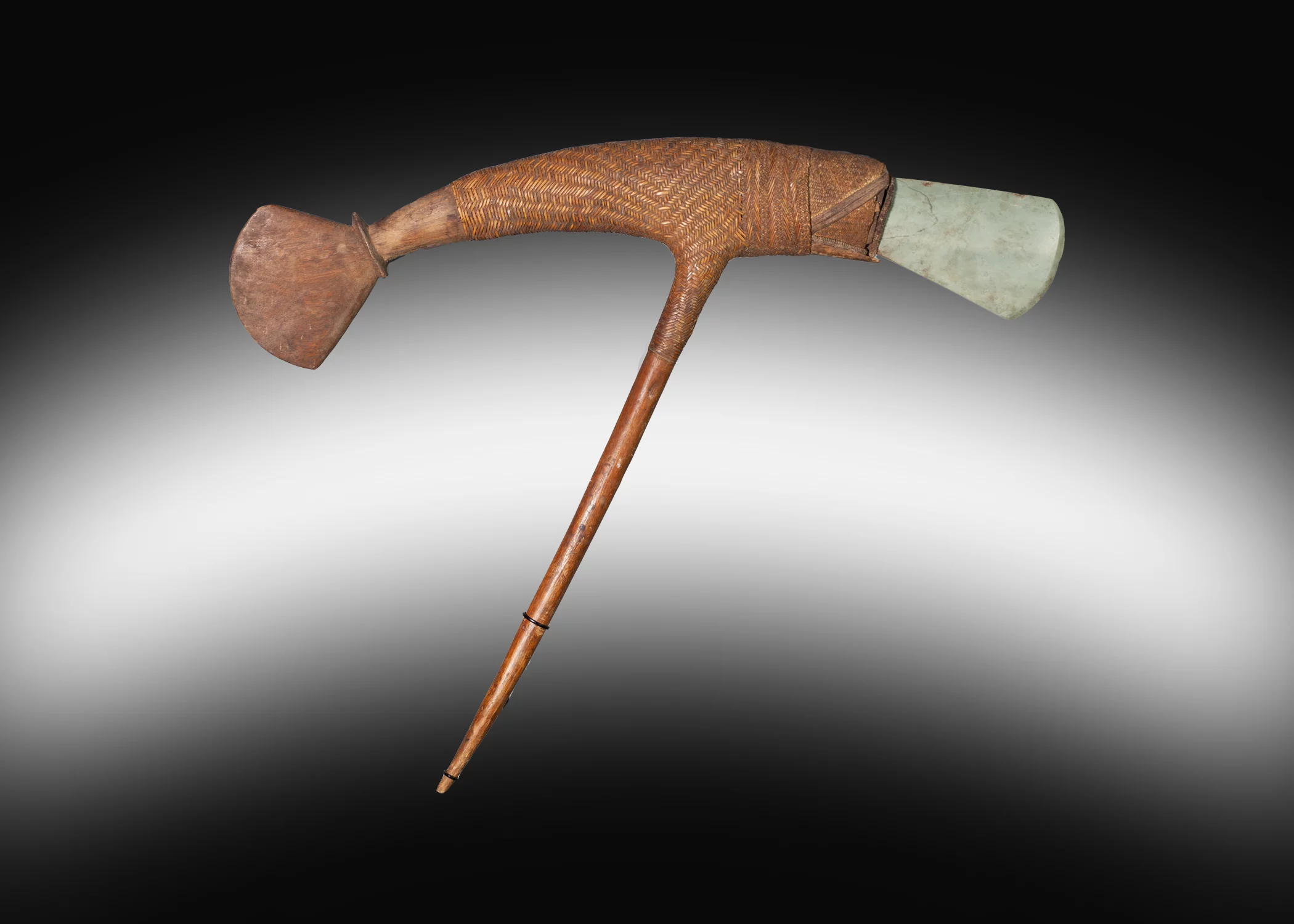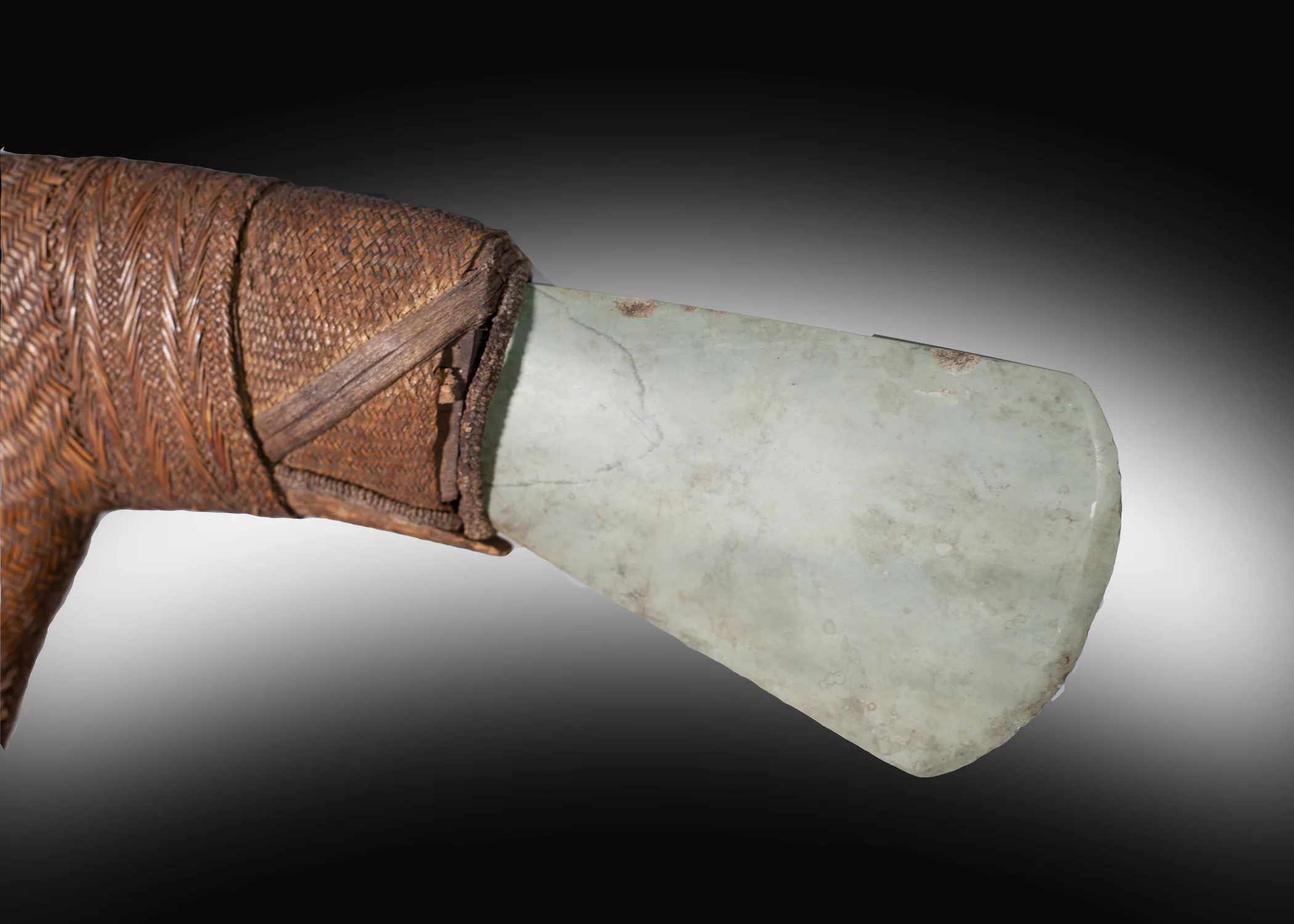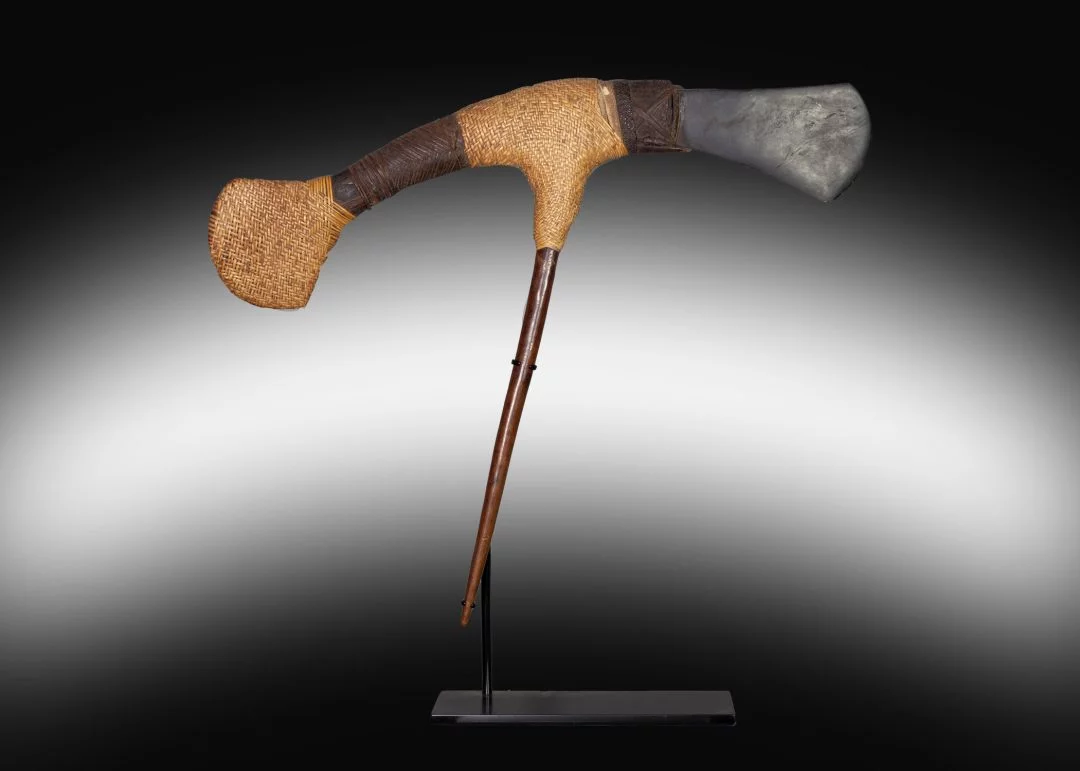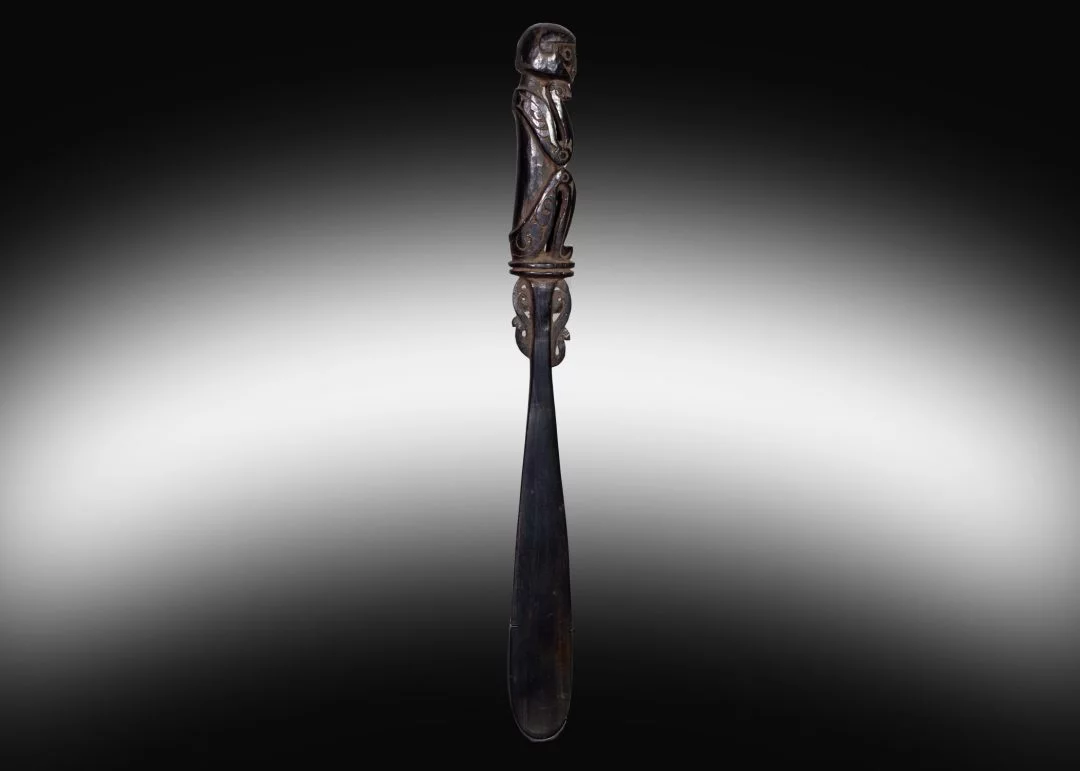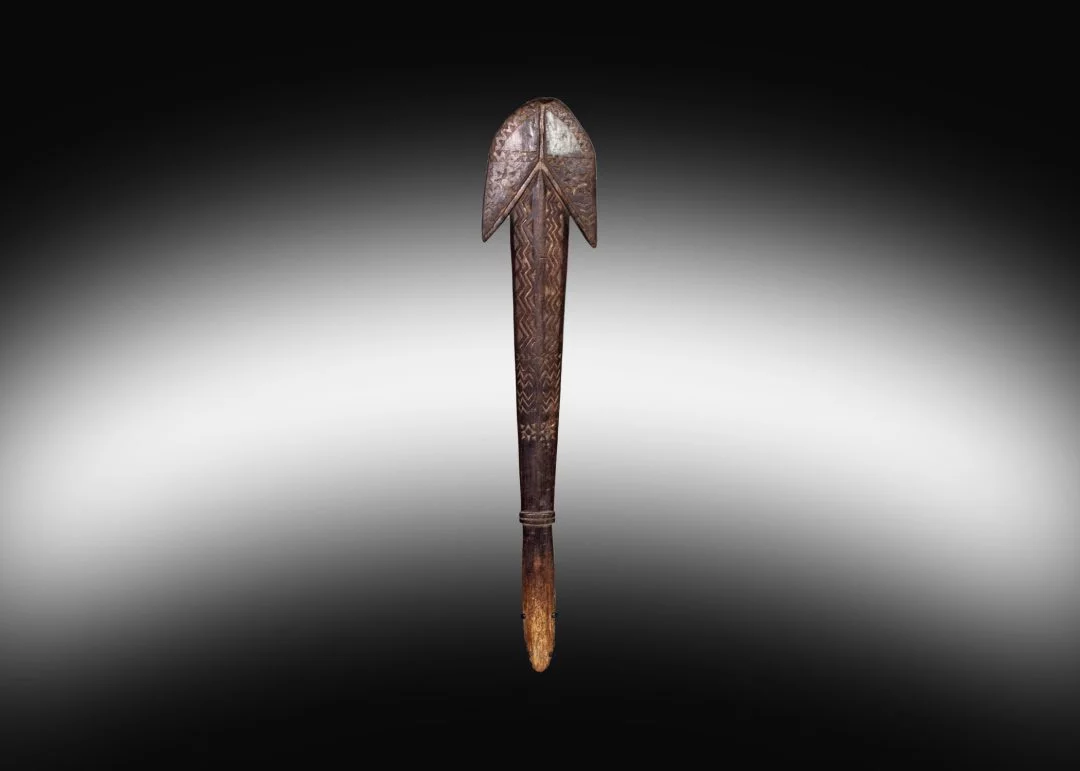Ceremonial Fighting Axe III
-
TitleCeremonial Fighting Axe III
-
LocationMt Hagen, Western Highlands
-
Date1940s
-
PriceSOLD
Europeans only entered the Highlands of New Guinea in the early 1930’s where of course axes with stone blades were still in common use. Work axes with plain and undecorated hafts were used for tree felling, garden work and tribal warfare.
In the Western Highlands or Mt Hagen there were also ceremonial axes. These axes are very distinctive with their counter balanced wooden fin at the opposite side of the blade. They have very intricate and decorative cane binding around the haft. The earlier axes like this example were used in warfare and had a thicker blade than more recent one produced in the 1950’s. The axe has a multitude of uses in the Highlands. It was used to remove a joint of a finger as a sign of mourning the death of a relative. Both the work and the ceremonial axe was used as money to buy other commodities like salt, body oil and shells, which were traded into the area over considerable distances. Axes with pigs and shells were also used in brideprice or gifts to the brides family at marriage. These ceremonial axes were and still are worn in the belt for adornment on special occasions particularly singsings or dance displays. Steel axes probably did not come into the area in great numbers until the 1940’s. Stone axes were still being produced for traditional use until 1950’s in Mt Hagen area and even until 1960’s in the remoter areas to the west..
This axe is mounted on a Custom metal stand
Europeans only entered the Highlands of New Guinea in the early 1930’s where of course axes with stone blades were still in common use. Work axes with plain and undecorated hafts were used for tree felling, garden work and tribal warfare.
In the Western Highlands or Mt Hagen there were also ceremonial axes. These axes are very distinctive with their counter balanced wooden fin at the opposite side of the blade. They have very intricate and decorative cane binding around the haft. The earlier axes like this example were used in warfare and had a thicker blade than more recent one produced in the 1950’s. The axe has a multitude of uses in the Highlands. It was used to remove a joint of a finger as a sign of mourning the death of a relative. Both the work and the ceremonial axe was used as money to buy other commodities like salt, body oil and shells, which were traded into the area over considerable distances. Axes with pigs and shells were also used in brideprice or gifts to the brides family at marriage. These ceremonial axes were and still are worn in the belt for adornment on special occasions particularly singsings or dance displays. Steel axes probably did not come into the area in great numbers until the 1940’s. Stone axes were still being produced for traditional use until 1950’s in Mt Hagen area and even until 1960’s in the remoter areas to the west..
This axe is mounted on a Custom metal stand

